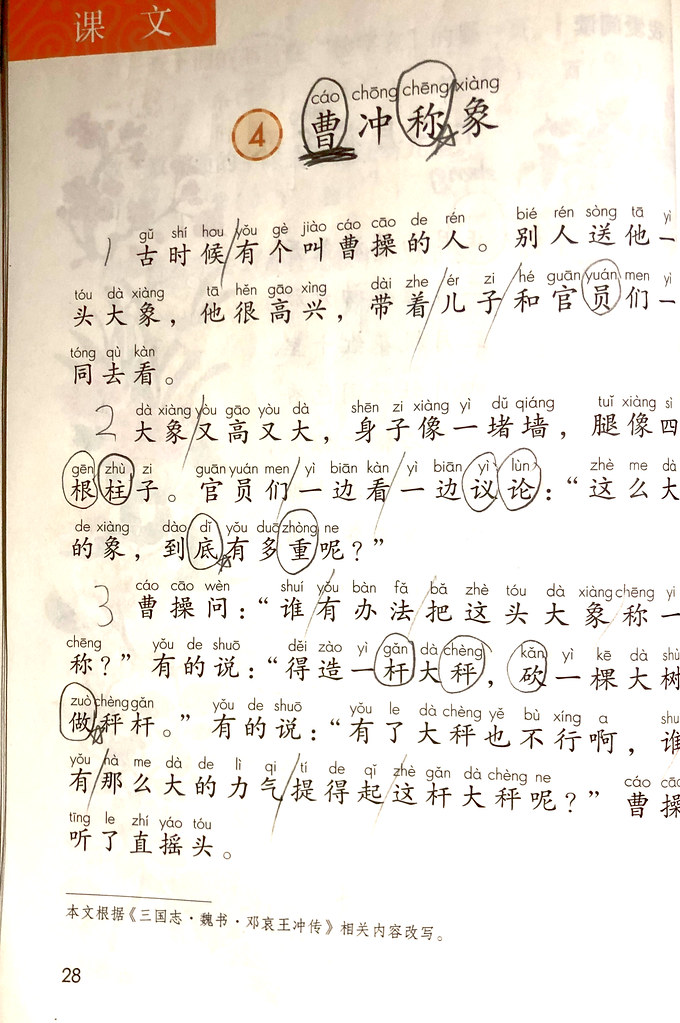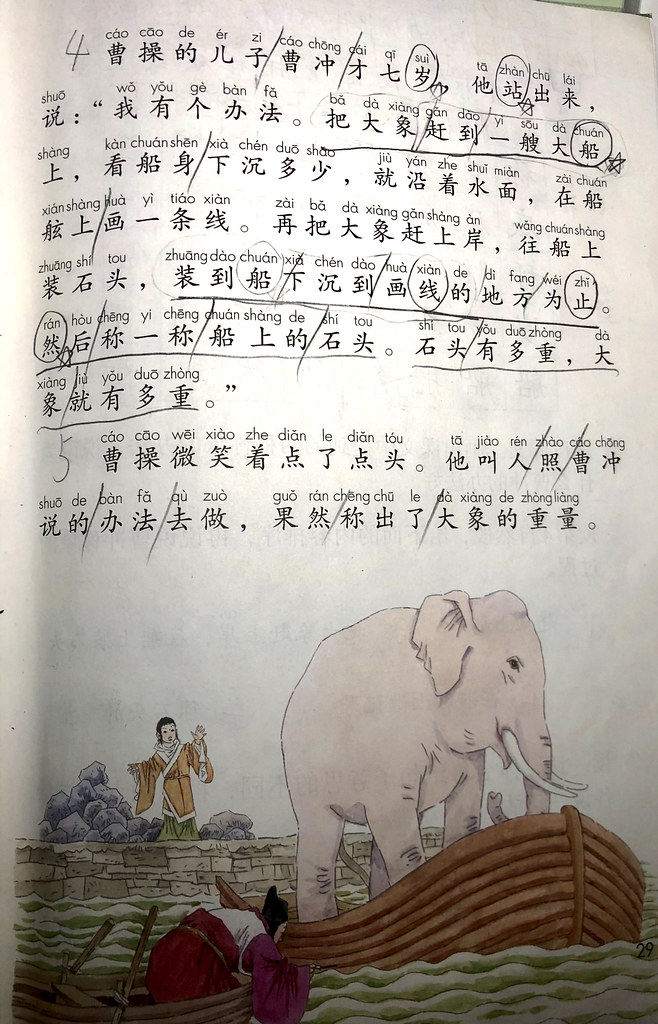Weighing Elephants and Difficulty
I recently posted a bit about my daughter’s Chinese first grade Chinese language (语文) textbook. I haven’t found the time to dig deeper yet, but I couldn’t help but notice this story from her second grade textbook (and sorry, these photos are not pretty…):


The story of 曹冲 (Cao Chong) devising a way to weigh an elephant is a classic story in China. I wasn’t aware until now that (apparently) second grade is the time for a Chinese child to learn it, if she hasn’t already.
What struck me as interesting about this story is that the very same story is the subject of an Upper Intermediate ChinesePod lesson from 2011: How to Weigh an Elephant (hosted by Jenny Zhu and me). Much of the vocabulary is the same, and the difficulty level is roughly equal.
So… in this particular case, a second grade reading for Chinese kids matches up with an upper intermediate lesson for foreign learners. I’m still exploring the ways that first and second language acquisition differ, in terms of relevant topics, vocabulary, grammar, etc., but this one really jumped out at me.

Comparing native speakers learning to read (likely built atop words they are already familiar with) seems to me a very different task compared to second language learners.
Case in point: My first Chinese book I read was 《三体》, heavily relying on Pleco’s document reader to fill in missing gaps. A Chinese person commented that they thought the book was very advanced and they were (seemingly) impressed. However, being a science fiction book, almost all of the difficult terms had 1-to-1 correspondences with scientific concepts in English I was already familiar with. As a result, the book was pretty easy to read as long as I looked up new vocabulary. The difficulty was conceptual, not linguistic, for those who don’t have a science background.
In contrast, folklore and mythology in stories like this I often struggle with, simply because background concepts are so different. Reading a book like 《蛙》 has a lot of difficulties because of things that are familiar to life in rural China, but are completely alien to me. Some terms still confused me even after looking them up, while they would be everyday concepts for those there.
I think it’s an interesting idea to contrast native and SLA, but which levels match with which will depend a lot on the text in question, no?
It’s a totally different task. Sorry, I didn’t think that even needed to be said, but I should have been clearer… it was just a fun comparison to make, and rarely am I even afforded any chance to make any kind of direct comparison between the two, because it’s a totally different task.
I had the same experience with San Ti. Much easier than expected. (The flashback parts were, by far, the hardest.)
What is the name of the book?
Click through to that previous post. It’s a 语文 textbook.
I guess what this tells me is that even young children can have good vocabulary and comprehension in their native tongue, which may objectively be equivalent to upper intermediate for second language learners. Seems surprising.
Not really equivalent, but it seems that way on the surface, in this particular case.
The abilities of native speakers and second language learners just don’t match up at all in many ways, but in this case, the particular material covered sort of matched. It was interesting to me, but it’s not particularly useful in any real way to have made this connection.